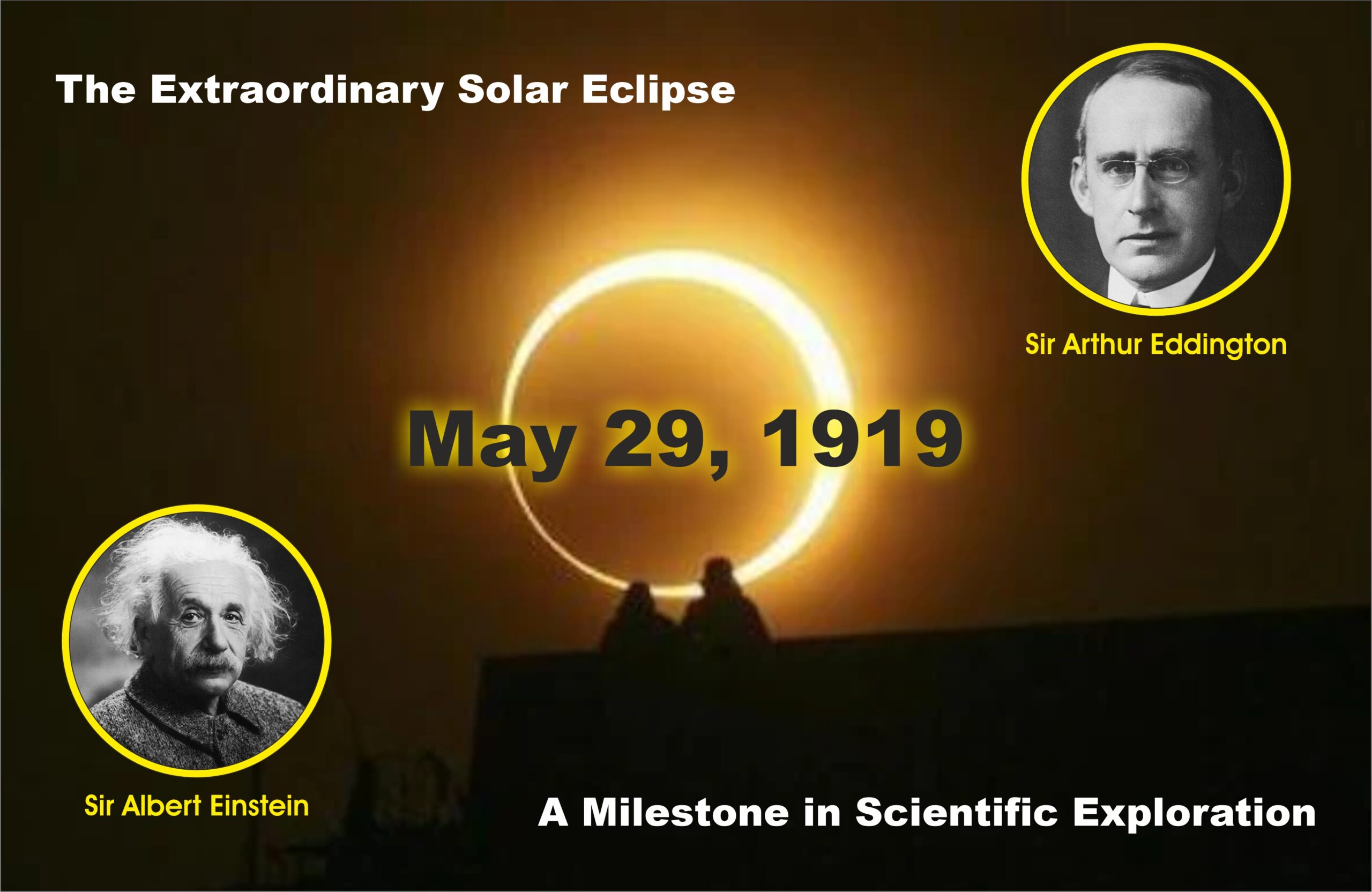On May 29, 1919, a remarkable event captured the attention of scientists, astronomers, and the general public alike—a total solar eclipse that would forever change our understanding of the universe. This celestial phenomenon, observed in various parts of the world, would prove to be a crucial moment in scientific history, validating one of the most groundbreaking theories of the time: Albert Einstein's theory of general relativity. Let us delve into the details of this significant solar eclipse and its lasting impact on our understanding of the cosmos.
The Historical Context:
In the early 20th century, Albert Einstein's theory of general relativity began to challenge the long-standing Newtonian model of gravity. According to Einstein's theory, gravity is not a force transmitted between objects but rather a curvature in the fabric of space and time caused by massive objects. However, this revolutionary concept required empirical evidence to validate it.
Arthur Eddington's Expedition:
Sir Arthur Eddington, an esteemed British astronomer, recoagnized the potential of a total solar eclipse to provide the necessary observations for testing Einstein's theory. He meticulously planned an expedition to two locations—Sobral, Brazil, and Príncipe Island (off the coast of West Africa)—where the path of the eclipse would be visible. Eddington aimed to capture the positions of stars near the sun during the eclipse and compare them to their positions at other times to test Einstein's predictions.
The Eclipse's Arrival:
On May 29, 1919, the much-anticipated day arrived, and scientists across the world prepared to witness a total solar eclipse. In Sobral and Príncipe, Eddington and his team faced several challenges, including adverse weather conditions and the difficulties of setting up and calibrating their instruments. Despite the obstacles, they remained determined to obtain the data needed to confirm or refute Einstein's theory.
The Verification of General Relativity:
During the eclipse, Eddington and his team successfully captured a series of photographs of the stars near the sun's edge. The photographs revealed that the positions of the stars appeared to shift slightly compared to their expected positions. This phenomenon, known as gravitational lensing, was a direct confirmation of Einstein's predictions and provided crucial evidence in support of the theory of general relativity.
Scientific Revolution and Legacy:
The confirmation of Einstein's theory during the 1919 solar eclipse was a groundbreaking moment in scientific history. It revolutionized our understanding of gravity and space-time, marking a paradigm shift from the Newtonian worldview that had prevailed for centuries. Einstein's theory of general relativity has since become one of the cornerstones of modern physics and cosmology, influencing numerous scientific advancements and shaping our exploration of the universe.
Furthermore, the successful verification of a scientific theory during a solar eclipse marked a turning point in how scientists approach astronomical phenomena. It highlighted the significance of rare celestial events as opportunities for scientific breakthroughs and emphasized the importance of empirical evidence in shaping our understanding of the natural world.
Conclusion:
The solar eclipse of May 29, 1919, holds a prominent place in the annals of scientific exploration. Through the meticulous observations and dedicated efforts of Sir Arthur Eddington and his team, the eclipse provided empirical evidence that validated Albert Einstein's theory of general relativity. This event not only reshaped our understanding of gravity and the cosmos but also set a precedent for using rare celestial phenomena as platforms for scientific discovery. The 1919 solar eclipse remains a testament to the power of human curiosity, ingenuity, and the quest for knowledge.

